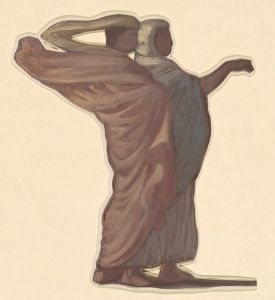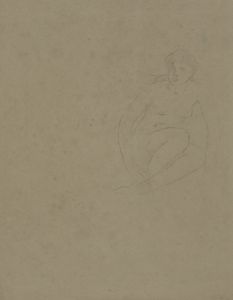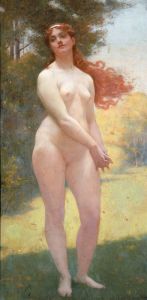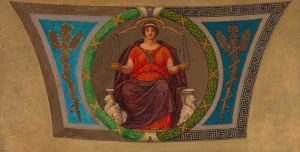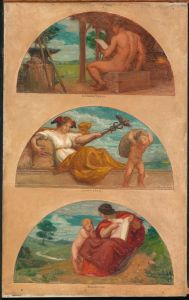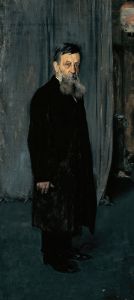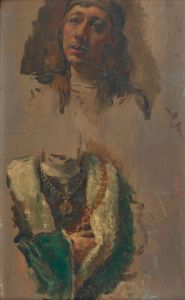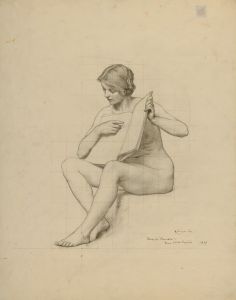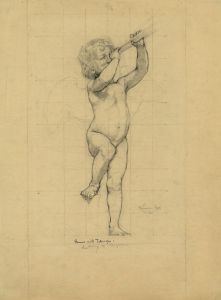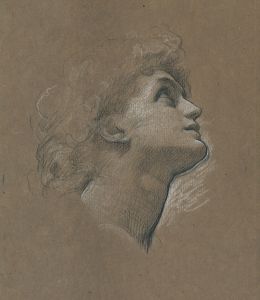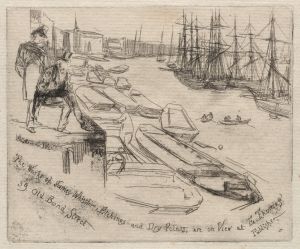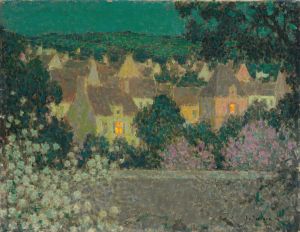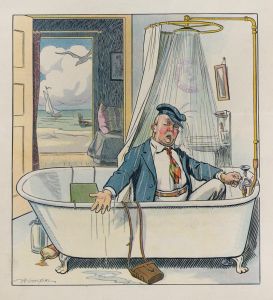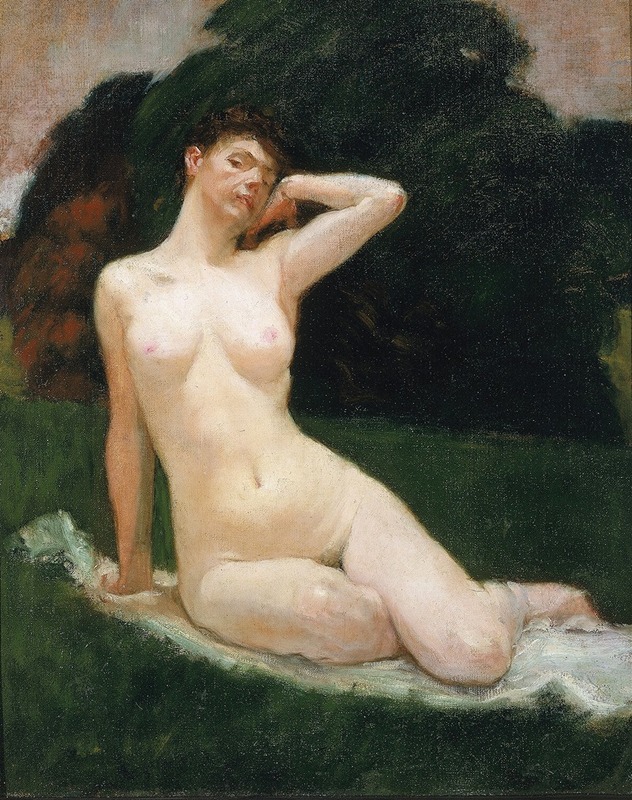
Study for Evening
A hand-painted replica of Kenyon Cox’s masterpiece Study for Evening, meticulously crafted by professional artists to capture the true essence of the original. Each piece is created with museum-quality canvas and rare mineral pigments, carefully painted by experienced artists with delicate brushstrokes and rich, layered colors to perfectly recreate the texture of the original artwork. Unlike machine-printed reproductions, this hand-painted version brings the painting to life, infused with the artist’s emotions and skill in every stroke. Whether for personal collection or home decoration, it instantly elevates the artistic atmosphere of any space.
Kenyon Cox (1856–1919) was an American painter, illustrator, muralist, and writer, known for his academic style and contributions to the American art scene in the late 19th and early 20th centuries. One of his notable works is "Study for Evening," which reflects his dedication to classical themes and techniques.
"Study for Evening" is a preparatory work, a common practice among artists who meticulously plan their compositions before executing the final piece. This study showcases Cox's skill in rendering the human form and his commitment to the ideals of beauty and harmony that were central to the academic art tradition. The piece likely served as a preliminary exploration of composition, light, and form, which Cox would later refine in a more finished work.
Kenyon Cox was deeply influenced by his education at the Pennsylvania Academy of the Fine Arts and later at the École des Beaux-Arts in Paris, where he studied under the tutelage of renowned artists like Jean-Léon Gérôme. His time in Europe exposed him to the classical art traditions that would heavily influence his style. Cox was part of a movement that sought to uphold the standards of the Old Masters, emphasizing technical skill, anatomical accuracy, and the depiction of idealized beauty.
In "Study for Evening," Cox's attention to detail and his ability to capture the subtleties of light and shadow are evident. The study likely features a figure or figures, as was common in his work, rendered with a focus on anatomical precision and graceful poses. Cox's use of light would have been carefully considered to enhance the mood and atmosphere of the scene, a testament to his understanding of the interplay between light and form.
Cox was also a prominent art critic and writer, and his writings often reflected his belief in the importance of classical art principles. He was a vocal advocate for the academic style at a time when modernist movements were beginning to gain prominence. His works, including "Study for Evening," can be seen as part of his broader effort to preserve and promote these traditional values in art.
Throughout his career, Cox created numerous murals and paintings, many of which can be found in public buildings and institutions across the United States. His legacy is marked by his dual role as an artist and educator, influencing a generation of artists through both his works and his teachings.
While specific details about "Study for Evening" may be limited, the work exemplifies Kenyon Cox's artistic philosophy and his commitment to the principles of academic art. His studies and finished pieces continue to be appreciated for their technical excellence and their embodiment of the ideals of beauty and harmony.





